Leukopaks are an Essential Tool in the Development of Cell Therapies
Researchers and pharmaceutical companies may use leukopaks to obtain a concentrated and pure population of White Blood Cells (WBC) for experimental purposes. Additionally, leukopaks can be a source of cells for cell-based therapies, where the isolated immune cells are modified and then reintroduced into the patient to enhance the immune system against certain disease conditions.
Leukopaks are a valuable resource in biomedical research and the development of novel therapeutic approaches, particularly in the field of cell-based immunotherapy.
CONTACT QPS TODAY TO GET A QUOTE FOR YOUR NEXT LEUKOPAK!
Why QPS?

QUALITY PRODUCTS
QPS is well known among pharma and biopharma clients for consistently high quality deliverables.

RELIABLE SERVICE
Based on site with a clinical trials unit, QPS has an abundance of donors ready to meet your leukopak needs.

PERSONALIZED INTERACTIONS
Our team of account managers and customer support staff will ensure excellent service.

ON-TIME DELIVERY
We will let you know exactly when you can receive the product, taking the guesswork out of planning.
Leukopaks: An essential tool in cell therapy development
Leukopak, short for leukapheresis pack, is a collection of white blood cells (WBC, also called leukocytes) obtained through a specialized medical procedure called leukapheresis. Leukapheresis is a process where blood is drawn from a donor, usually through a vein in the arm, and then passed through a machine that separates and collects the white blood cells. The remaining blood components are returned to the donor.
Leukopaks are valuable in medical and research contexts, particularly in the field of immunology and cell therapy. They are used to isolate and study specific types of immune cells, such as T cells (up to 50%), monocytes (20%), B cells (10%), natural killer (NK) cells (3%), and other cell types (3% granulocytes and 3% hematocrit). These cells play crucial roles in the immune system and are often studied for various therapeutic applications, including cancer immunotherapies, HIV, autoimmune diseases, infectious diseases, and the treatment of certain blood disorders.
Researchers and pharmaceutical companies may use leukopaks to obtain a concentrated and pure population of WBC for experimental purposes. Additionally, leukopaks can be a source of cells for cell-based therapies, where the isolated immune cells are modified and then reintroduced into the patient to enhance the immune system against certain disease conditions. Leukopaks are a valuable resource in biomedical research and the development of novel therapeutic approaches, particularly in the field of cell-based immunotherapy.
Leukopaks can be categorized based on the specific types of WBC that they contain, or the purpose for which they are collected. Here are some common types of leukopak and their uses.
Categories | Composition | Uses |
Peripheral blood leukopaks | Condensed leukocyte collection through leukapheresis | After downstream processing, users create most adaptive immune cell types according to their need. (PBMC/T cell/B cell/NK cell) |
PBMC | T/B/NK cells with monocytes | Abundant cells for Immunology Research, Vaccine Development, Infectious Diseases, Adoptive Cell Therapy & Other Cellular Therapies. |
T Cell | T cells (Pan T cell, Th cell, Tc cell) | Cancer Immunotherapy. Cellular Therapies (CAR-T cell manufacture) |
B Cell | Enriched B cells | Antibody Development, Autoimmune Diseases, Vaccine Research. |
NK Cell | Enriched for NK cells | Cancer Immunotherapy, Innate Immune Response, Cytotoxic Activity Assays |
Leukopaks play a significant role in pharmaceutical research and development, particularly in the field of immunotherapy. Here are several ways in which leukopaks are used in drug therapy research:
- Isolation of Specific Immune Cell Types: Leukopaks allow researchers to study specific types of WBC, such as T cells, B cells, NK cells, monocytes, and other cells. This is important for understanding the role of these cells in immune responses and diseases.
- Cell Therapy Development: Leukopaks provide a source of cells for developing cell-based therapies. For example, T cells are used in the development of adoptive cell transfer therapies, where T cells are isolated, expanded, and sometimes genetically modified before being reintroduced into patients to enhance the patient's immune response to target and attack cancer cells.
- Identification of Biomarkers: Identification specific of biomarkers associated with drug responses for the effectiveness or potential adverse/side effects from various immune cell types.
- Immunomodulatory Drug Development: Drug development to modulate the immune system. The study of the effects of potential immunomodulatory agents on different immune cell subsets to identify various drug candidates that can enhance or suppress immune responses.
- Immunology Research: Investigation into the roles, functions, and interactions of immune cells in various experimental conditions to develop strategies for immunotherapy disorders, vaccines, and autoimmune disease research.
- Cancer Immunotherapy Development: T cell leukopaks are instrumental in advancing research on cancer immunotherapy. After the processing of T cells via isolation and modification, T cells are applied to the development of novel therapies to target cancer cells using their enhanced ability to target cancer cells.
- Vaccine Development: To study the adaptive immune response to vaccines and vaccine adjuvants. Leukopaks, particularly PBMC and B cells are helpful tools for vaccine development, optimization, and testing by studying and understanding of immune response to vaccines and allowing researchers to optimize vaccine formulations This aids in the development of adjuvants that enhance the efficacy of vaccines by promoting a stronger and more sustained immune response.
- Infectious Disease Drug Development: Utilized for testing the efficacy of antiviral and antibacterial drugs by exposing immune cells to pathogens. Immune cells are exposed to pathogens and researchers evaluate the impact of potential drugs on the immune response against infectious diseases.
- Investigation of Drug Mechanisms: Understanding the mechanisms of action of drugs affecting the immune system through research to optimize drug formulations, dosages, and treatment regimens.
- Drug Efficacy Testing: To assess the efficacy of drugs designed to modulate immune responses. Researchers can expose isolated immune cells from leukopaks to potential drug candidates to evaluate their impact on cellular functions, proliferation, and cytokine production.
- Precision Medicine: Understanding the heterogeneity of immune cell populations in individuals is essential for the development of personalized and precision medicine approaches. Developing personalized drug therapies for unique immune profiling and contributions of drug therapies to specific patient characteristics, enhancing treatment efficacy. Leukopaks contribute to this understanding by providing a diverse source of immune cells.
Leukopaks are used in humans in various medical and clinical applications, primarily in the fields of immunotherapy, regenerative medicine, and biomedical research. They allow researchers to test and refine potential drug candidates, contributing to the development of novel therapies for a wide range of immune-related diseases, including immunodeficiency, autoimmune disorders, infectious diseases, and more.
In summary, leukopaks serve as essential tools in medical research, enabling scientists to investigate the immune system, develop new therapies, and advance knowledge of various diseases. Their utility is also critical for translational research, where findings from the laboratory are translated into clinical applications for improved healthcare outcomes. In these applications, the use of leukopaks enhances the importance of studying the power of the immune system for therapeutic drug development. They play a critical role in advancing medical knowledge and developing new drug treatments for multiple diseases.
Mobilized Leukopaks: Gathering essential stem cells for cell therapy development
Mobilized Leukopaks are apheresis products of CD34+ hematopoietic stem and progenitor cells (HSPCs) from healthy donors’ peripheral blood. Apheresis is a process where blood is drawn from a donor, usually through a vein in the arm, then passed through a machine that separates and collects various components of the blood. Leukapheresis is the same process, but it is focused on collecting the white blood cells (WBCs). In both cases, the remaining blood components are returned to the donor. "Mobilized" leukopaks are created through a process of stimulating the release of HSPCs from the bone marrow into the bloodstream by treatments with medical agents, called hematopoietic growth factors.
CD34 is a cell surface marker for both hematopoietic progenitor cells (HPCs) and early hematopoietic stem cells (HSCs). CD34+ HSPCs are a specific subset of cells found in the bone marrow, peripheral blood, and other tissues that express the CD34 surface antigen. The HSPCs are the most important cell types of stem cell clusters because they are self-renewable. Therefore, HPSCs can lead to differentiation into various types of blood cells, primarily those isolated from bone marrow and/or umbilical cord blood. These cells can also be collected via apheresis from donors who have completed a pre-donation treatment regimen that “mobilizes” the cells to move from the bone marrow into the blood stream making them available for collection. Therefore, HSPCs are currently being utilized in hematopoietic stem cell transplantation for the treatment of various hematologic disorders, including leukemia, lymphoma, and aplastic anemia. Overall, CD34+ HSPCs represent an important cell population with significant implications for both basic research and clinical medicine, including hematology, oncology, and stem cell biology.
For the past five decades, researchers have applied HSPCs to various biomedical fields, primarily for the research and development of cellular therapeutics according to their cellular functions and characters. HSPCs possess multipotency, thus they are self-renewable and differentiate into various blood cell types, including red blood cells (erythrocytes), white blood cells (leukocytes), and platelets (thrombocytes). HSPCs also can divide and produce identical daughter cells with stem cell properties. HSPCs reside in bone marrow receiving signals from surrounding cells and extracellular matrix components. In certain circumstances, in response to stimulus including internal stress or external agent injections, HSPCs are ready to mobilize from the bone marrow into the peripheral blood. Under the injury condition, HSPCs can either move back to the bone marrow or migrate to other tissues to contribute to blood cell formation and tissue repair. Thus, HSPCs are mostly used for blood or bone marrow transplantation to treat malignant or non-malignant blood tumors. Additionally, researchers are exploring their utility in solid tumor cancers, blood diseases, immune diseases, metabolic diseases, Alzheimer's disease, and Multiple Sclerosis.
Mobilized leukopaks are composed of highly condensed WBCs with CD34+ HSPCs. They provide a stem cell source for cell therapy or regenerative medicine work. With mobilized leukopaks, it is possible to alleviate the variability and deviations of cell homology between donors and they can provide more predictable cell composition compared to peripheral blood or bone marrow apheresis.
The rich cellular content and standardized composition of mobilized leukopaks are valuable resources for addressing various medical challenges and exploring new treatment modalities. Mobilized leukopaks are helpful in the study or/and application of regenerative medicine, transplant therapy, and cell therapy areas.
Mobilized leukopaks are collected using a Spectra Optia® Apheresis System which can collect a high yield of mobilized leukopaks. Each strictly and carefully selected heathy donor is treated with FDA-approved mobilized agents (G-CSF or/and Plerixafor). These drugs stimulate migration of CD34+ HSPCs from the bone marrow into the blood stream. The procedures of these drug treatments vary in duration and amount, according to the collection requirements of the specific type of mobilized leukopak.
Before leukapheresis to collect mobilized leukopaks, each single donor is treated with hematopoietic growth factors such as granulocyte colony-stimulating factor (G-CSF) or Plerixafor which can help mobilize HSPCs from the bone marrow into the peripheral blood circulation.
G-CSF: G-CSF (Filgrastim® and its biosimilars) promotes the increased production of granulocytes with CD34+ stem cells which are precursors of granulocytes. G-CSF accelerates CD34+ HSPCs release from bone marrow into the peripheral blood by decreasing stromal cell-derived factor-1 (SDF-1) expression levels as well as increasing proteases. In healthy donors, peak numbers of CD34+ stem cells are reached at 6th day (after daily injections for 5 days), at which point they are 2-fold higher than the levels on the 4th day.
Plerixafor: Plerixafor which is also known as Mozobil® enhances the increases of CD34+ HSPCs by working as an antagonist between SDF-1 and CXCRA ligand binding blocking in the bone marrow stroma cells.
G-CSF + Plerixafor: By using combination treatments, higher numbers of CD34+ HSPCs are released and flow into the circulation from the bone marrow. This procedure is used to generate significantly higher numbers of CD34+ HSPCs cells in the collection than can be gathered with either mobilizing agent alone. The working mechanisms of synergistic effects are such that Plerixafor increases releases of CD34+ stem cells by G-CSF stimulations in the bone marrow.
Mobilized leukopaks are a major source of HSPCs with condensed leukocyte populations. Thus, mobilized leukopaks will be utilized in the fields of transplant therapy, cell therapy, and regenerative medicines to treat to treat various cancers, immune disease, metabolic diseases, neurodegenerative disease, and a wide spectrum of other diseases. Additionally, the robust HSPCs’ characteristics of mobilized leukopacks will be utilized to replace or reconstruct the hematopoietic system during organ transplant surgery. Overall, mobilized leukopaks are a valuable resource for advancing hematopoiesis, immune function, and disease pathology. Moreover, mobilized leukopaks are being used in the development of innovative therapies in various clinical settings.



